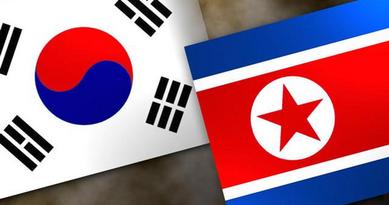

This represents capital tied up in stock and lost revenue opportunities. Integrating your accounting software and inventory management software means that your apps will do the heavy lifting for you. All you have to do is maintain accurate stock information so that any information that flows through to your accounting software is correct.
When not writing about inventory management, you can find her eating her way through Auckland. And the last 800 units sold from Batch 1 cost $4 each, for a total of $3,200. The next 1,500 units sold from Batch 2 cost $4.67 per unit, for a total of $7,005.
- The cost of these items is typically the cost to purchase, so the profit can easily be determined.
- This approach assumes that the oldest inventory items are used first, so that only the newest inventory items remain in stock.
- The JIT inventory management method takes more of an as-needed approach to stock control.
- Thus, it was evident that inventory valuation is an important aspect of accounting for SMEs.
Because inventory is a key part of a company’s operations, it is important to understand where it appears on the balance sheet. Each widget has the same sales price, so revenue is the same, but the cost of the widgets is based on the inventory method selected. Based on the LIFO method, the last inventory in is the first inventory sold. In total, the cost of the widgets under the LIFO method is $1,200, or five at $200 and two at $100.
So, Lee decides to use the LIFO method, which means he will use the price it cost him to buy lamps in December. As with FIFO, if the price to acquire the products in inventory fluctuate during the specific time period you are calculating COGS for, that has to be taken into account. To calculate COGS using the LIFO method, determine the cost of your most recent inventory. To calculate COGS using the FIFO method, determine the cost of your oldest inventory. The beginning inventory figure represents all the inventory stock a business can put towards generating revenue. Businesses can use the beginning inventory formula to understand the value of their inventory at the start of a new financial year.
If you’re using weighted average cost to calculate ending inventory
We will use the above example in both the LIFO, AVCO and FIFO with different purchase costs. The easiest way to complete stock transactions is in accounting software. However, not all accounting software packages include a stock account, so check before you choose one. Two good accounting software packages that account for stock are XERO and Quickbooks. The cost of purchases we will arrive at the cost of goods available for sale.
Generally Accepted Accounting Principles, also known as GAAP, is responsible for setting up standards for accounting procedures in the United States. Here is an example of a small business using the FIFO and LIFO methods. An unconstrained demand forecast might seem over optimistic, but for a business to take full advantage of market growth opportunities it is essential … Lead time and cycle time are widely used terms in the world of lean manufacturing processes. Here’s how each method will change the value of your ending inventory.

Direct materials- Direct materials are any materials and supplies utilized in the production of a product. This includes any resources that are used up or thrown away during the procedure, as well as any broken or useless materials. Any cost that changes with each manufactured unit is, as a general rule, a direct cost.
FIFO or LIFO Inventory Methods
If you have large quantities of nearly identical items, it may not be worth the effort to distinguish them. FIFO is a suitable method for this situation because when prices fluctuate or you need to sell something quickly, using this strategy will ensure that each sale comes from your oldest batch. If the business uses accounting software, the cost of goods sold is automatically adjusted when a sales invoice is issued, and the goods are listed on the invoice. First-in, first-out is a valuation method in which the assets produced or acquired first are sold, used, or disposed of first.
You can complete a stock check in various ways, including physically counting the stock or using a scanner to record each item. The drawback of this method is that the estimation of gross profit in step 2, base on the historical estimate, which may not necessarily be the case in the future. Also, if there are any inventory losses in that period are higher or lower than the historical rates, it can lead to an inappropriate amount of closing inventory. Profit MarginProfit Margin is a metric that the management, financial analysts, & investors use to measure the profitability of a business relative to its sales. It is determined as the ratio of Generated Profit Amount to the Generated Revenue Amount. This is why in periods of rising prices, LIFO creates higher costs and lowers net income, which also reduces taxable income.
As a result, the inventory asset on the balance sheet is recorded at the most recent cost. The reason why companies use LIFO is the assumption that the cost of inventory increases over time, which is a reasonable assumption in times of inflating prices. By shifting high-cost inventory into the cost of goods sold, a company can reduce its reported level of profitability, and thereby defer its recognition of income taxes. Since income tax deferral is the only justification for LIFO in most situations, it is banned under international financial reporting standards .
Methods of determining cost price of stocks
Thus, the first 1,700 units sold from the last batch cost $4.53 per unit. The inventory process at the end of a year determines cost of goods sold for a business, which will be included on your business tax return. COGS is deducted from your gross receipts to figure your gross profit for the year. This is because business cannot choose certain cost item and take it as an expense. Consequently, goods purchased recently form a part of the ending inventory under this method.
Open-to-buy (OTB) inventory planning
Under the FIFO system, the first unit of a piece of stock is assumed to be the first to return off of the cabinets. The FIFO (first-in, first-out) technique of inventory costing assumes that the prices of the first items bought are these charged to cost of products offered when the company actually sells items. This methodology assumes the primary goods bought are the primary goods bought. In some firms, the primary units in must be the first models out to avoid giant losses from spoilage. As a retailer, you can track the costs of inventory purchases throughout the year. But you are not allowed to deduct the cost of inventory on hand at the end of the year.
Inventory management systems help businesses to track inventory levels, set reorder points, and generate reports. You sell stock and therefore transferred it to the cost of sales on the profit and loss account, also known as the income statement. Under this standard, there are two stock valuation methods FIFO and average cost AVCO). which method assumes that last item in stock Accounting for stock or inventory accounting is an essential part of a business if you buy and sell goods. FIFO or LIFO are the methods that companies use to assess their inventory and calculate profit. Since inventory is in constant to and fro motion within the company, it’s challenging to track all the costs of individual items.
LIFO accounting means inventory acquired at last would be used up or sold first. Ending InventoryThe ending inventory formula computes the total value of finished products remaining in stock at the end of an accounting period for sale. It is evaluated by deducting the cost of goods sold from the total of beginning inventory and purchases. Average cost method assigns a cost to inventory items based on the total cost of goods purchased in a period divided by the total number of items purchased.
Your small business may use the simplified method if the business had average annual gross receipts of $5 million or less for the previous three tax years. Milagro buys 125 additional units on March 17, and sells 125 units between March 17 and March 25, so there is no change in the inventory layers. Milagro buys 200 additional units on March 11, and sells 180 units between March 11 and March 17, which creates a new inventory layer that is comprised of 20 units at a cost of $250. This new layer appears in the table in the “Cost of Layer #2” column. Inventory is generally categorized as raw materials, work-in-progress, and finished goods. Examples of raw materials include aluminum and steel for the manufacture of cars, flour for bakeries production of bread, and crude oil held by refineries.
Cycle stock inventory is the portion of an inventory that the seller cycles through to satisfy regular sales orders. It is part of on-hand inventory, which includes all of the items that a seller has in its possession. This production-scheduling mannequin was developed in 1913 by Ford W. Harris and has been refined over time. The formula assumes that demand, ordering, and holding prices all remain constant.
Why it is so important to value our inventory, different methods for inventory valuation, and how you should choose your inventory valuation method based on your business. According to the first-in-first-out valuation method, the inventory items are sold in the same order in which they are purchased or manufactured. The oldest inventory products are sold first as per the FIFO method. The FIFO valuation method is the most commonly used inventory valuation method as most of the companies sell their products in the same order in which they purchase it. Under the FIFO method, the earliest goods purchased are the first ones removed from the inventory account. For example, in an inflationary environment, current-cost revenue dollars will be matched against older and lower-cost inventory items, which yields the highest possible gross margin.
Therefore, when calculating COGS , the company will go by those specific inventory costs. Although the oldest inventory may not always be the first sold, the FIFO method is not actually linked to the tracking of physical inventory, just inventory totals. However, FIFO makes this assumption in order for the COGS calculation to work. Another method business owners and managers use to account for inventory on the balance sheet is the average weighted method.
There are a number of methods that can be used to calculate the inventory value, and the choice of method may have a significant impact on the reported profitability of a company. As you are selling the first bought item first, your balance sheet will always show the actual cost price of the inventory. LIFO is the opposite of the FIFO method and it assumes that the most recent items added to a company’s inventory are sold first. The company will go by those inventory costs in the COGS calculation.




